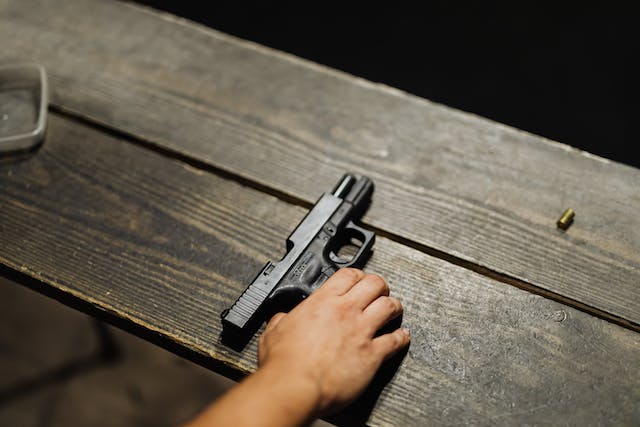Going to a gun shop and looking for a handgun can be a little intimidating and overwhelming, especially since there’s a variety of them to choose from. Although manufacturers make different handgun models, you can only decide between a pistol and a revolver. However, within these two categories, you must be aware of their differences and how to choose the one that matches your needs.
And if you’re a first-time shooter, there is one thing you should avoid at all costs: choosing the wrong caliber. Below, you’ll gain a better comprehension of revolver and pistol calibers, and explore the best one.
The Differences Between a Revolver and a Pistol
A revolver and pistol are two of the most reliable handguns for self-defense, hunting, and sport shooting. As such, they’ve been in the market for many years and many people own them. In fact, around 45 percent of households in the U.S. own one or more firearms. The numbers are high and many people are constantly looking to find more.
Revolver
The classic handgun – the revolver, has a supportive frame that works perfectly for the grip and barrel. It also has a firing mechanism and a cylinder that rotates and holds the cartridges ready. These cylinders can hold up to 10 cartridges, so when you pull the trigger, the hammer falls, which causes the cartridge to fire and shoot the bullet.
However, there’s one small drawback to revolvers: they’re slower to load. Because you have to manually remove the empty cases, the loading of the revolver takes a bit of time.
Pistol
As with any other type of gun, pistols also come in different styles. A semi-automatic pistol uses only one chamber and barrel, making the ejecting of the empty cartridge rim easier. Although people may use pistol and revolver interchangeably, the way the Bureau of Alcohol, Tobacco, Firearms and Explosives (ATF) defines pistols is: ‘’a weapon originally designed, made, and intended to fire a bullet from one or more barrels when held in one hand.’’
That said, a pistol may be easier to use for a beginner shooter because of its semi-automatic design. And since the trigger and firing pin are in one place, they reset the next round immediately.
What is a Caliber?
Now that we covered the main types of handguns, let’s go through the meaning and importance of the caliber. Essentially, a caliber is the bullet’s diameter and is usually measured in mm or inches. In addition, the caliber is made of four main parts:
- Bullet (projectile)
- Case
- Powder
- Primer
Different Types of Handgun Calibers
Each caliber has a different energy range and weight in grains, which is why you must learn how to compare and contrast handgun calibers. If you choose the wrong caliber for your gun, you might face severe consequences. For example, if you go through a handgun vs. pistol caliber comparison, you’ll discover a wide range of calibers and which one fits your gun better.
Although there’s a variety of handgun cartridges that are used, the most popular handgun calibers include the following:
- .22 Long Rifle
- .380 ACP
- 9mm (9mm Luger)
- .40 ACP
- .38 Special
- .357 Magnum
Factors to Consider When Choosing a Handgun Caliber
When you’re stuck between some caliber alternatives for your handgun, it’s always useful to go through some gun basics and make a decision.
Rimfire vs. Centerfire
One of the most important things to consider before settling on a type of caliber is to understand the types of ammunition: rimfire vs. centerfire. Although both are ignited by the cartridge’s primer, a rimfire holds the primer in the rim of the cartridge, while a centerfire contains the primer in the center. From all the calibers we listed above, .22 LR is the only rimfire cartridge, while the others are centerfire.
Performance and Recoil
Two of the main factors that play an immense part in the energy that’s inflicted on your target are the bullet weight and bullet velocity. However, when it comes to recoil, faster or larger bullets in lighter handguns create more energy.
That’s also why the FBI switched from .40 S&W to 9mm. The speed and accuracy of the bullet mean shooters can have higher chances of success with lighter guns because heavier ones need additional recoil to have the same effect on the target.
Ballistic Performance
If there’s one way to compare different calibers and ammo loads it’s the ballistic gel test. This is used as a standardized method to replace living tissue. In order for the bullet to effectively wound the target, the projectile penetration must be within the range of 12-18 inches. If you tend to go for over 18 inches, the bullet is more likely to hit bystanders who aren’t your target.
Additionally, there are two main types of projectiles: hollow point and full metal jacket bullets. The hollow point bullets have a hollow tip and are great for self-defense, hence its name. Full metal jackets, on the other hand, have a softer core that’s entirely placed in harder metal.







